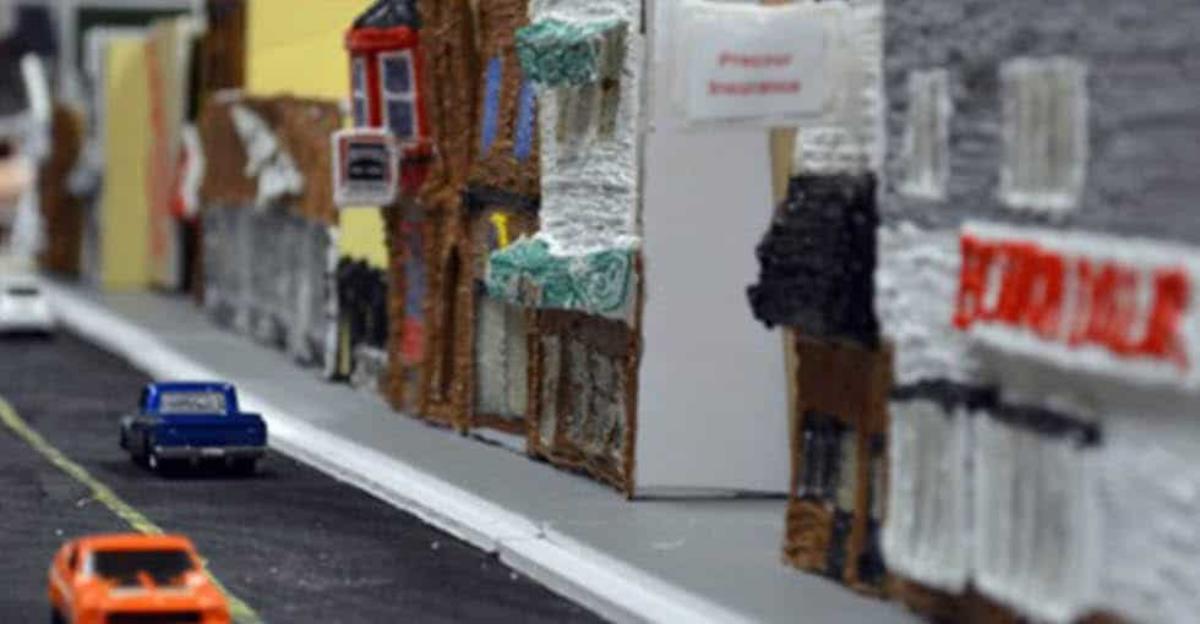We often discuss the classroom applications for 3Doodler in STEM subjects, or as a way for students to learn about emerging technologies. But the educational benefits of 3Doodler aren’t just restricted to math and science, as English teacher Eva Reilly shows.
Reilly challenged her high school English class to make a model of their home town – Phillips, Wisconsin – as a way to inspire proper research and learn how to find reliable and trustworthy sources.
The class constructed their eight-foot model of the downtown street as part of their non-fiction unit in their English curriculum. And as with any non-fiction project, the first step is research.
“They read and wrote reviews of articles, memoirs, letters from books, newspapers, periodicals, and the internet about Phillips,” says Reilly.
The students took note of notable historical events that had affected the town, and shaped how it looked – like the Phillips Fire of 1894.
This fire swept through the entire downtown area the students were recreating, levelling many of the original structures. In the rebuilding efforts, the major buildings were required to be made from brick as a fire-safety measure.
“History is not just about events of way back in the day; it is the making of our past, present, and future“
Knowing the history and events which resulted in how the town currently looks gave new meaning to the construction of the model. “After learning about the history of Phillips and its development, students picked business buildings downtown to reconstruct on a scale model,” Reilly says. “They didn’t realize how difficult the project would be at first.”
Students visited the buildings in person, taking photos to use in the construction of their model to make sure they could be as accurate as possible. They also talked to residents with first-hand knowledge of the buildings’ histories and how they had been renovated throughout the years, all while keeping notes in fieldwork journals to chronicle the project.
To create the models, Reilly introduced some cross-subject integration by having the student figure out the correct dimensions for each building using algebra and geometry. “They learned we need math in everything we do, not just in the classroom,” Reilly says. “Sometimes, quite frankly, they were confused as to whether they were in math, science, history, or English class, but the process sure kept them engaged!”
Using 3Doodler pens, the students got to work constructing their model town. They needed to refer to their notes, photos, and research to make the buildings accurate for a realistic model. “The students learned that English is not just reading about fiction or nonfiction material, but it is also a bit of a history lesson,” Reilly says. “History is not just about events of way back in the day; it is the making of our past, present, and future.”
“As teachers, we learn that hands-on projects help students apply what they learn in school to the world around us“
Reilly is continuing the project again with future classes. The model – which is currently on display at the Phillips Public Library – will continue to grow as students each year research a different area of the town.
“As teachers, we learn that hands-on projects help students apply what they learn in school to the world around us – predictable and unpredictable,” explains Reilly. “Students learn that, in the end, everything we learn in school comes together – English, history, math, science, and technology.”
Used with permission from Upwards created by 3Doodler.






Leave a Reply